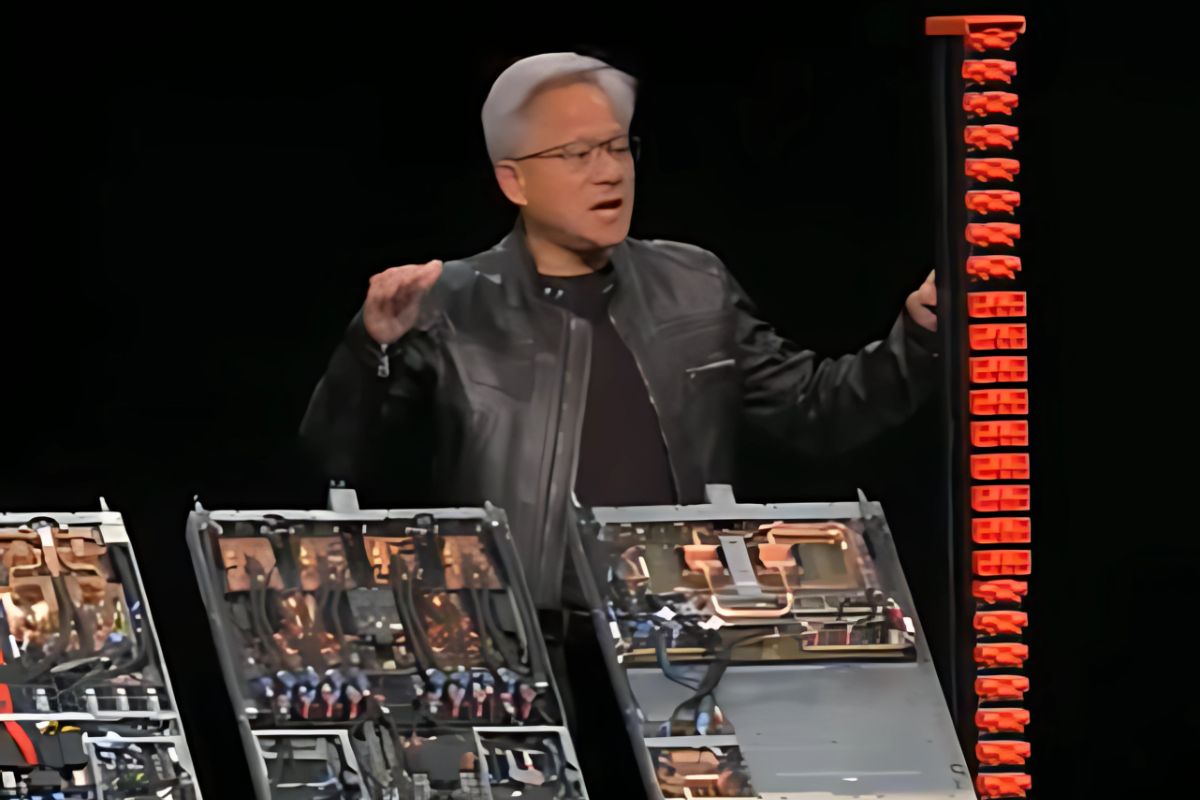What Is NVLink Spine? NVIDIA’s High-Speed Data Highway

Computers have to perform complex operations that require rapid and frequent access to huge amounts of data. This is the case for many data centres where computers are set up in units and operate in parallel. NVIDIA, a well-known manufacturer of top-end graphics cards and computing peripherals, developed NVLink Spine to enable efficient data transfer between major components of the computer system.
The NVLink Spine can be regarded as an array of cables/switches that join together numerous graphics cards and other systems, allowing fast inter-system communication. This architecture is designed for handling large and complex operations, such as training artificial intelligence models or performing complex operations on big data, as well as executing programs in real time.
Table of Contents
ToggleWhat Is NVLink?
It is an interconnect technology developed by NVIDIA. NVLink enables interconnections between multiple graphics cards and computers to perform more efficiently than previous designs based on PCIe (Peripheral Component Interconnect Express) technology.
Consider two phones that can send images to one another. If they’re using Bluetooth, it may take up to a minute to transfer 100 pictures. Alternatively, Wi-Fi can do it in a few seconds. NVLink is the same: it is a faster method of moving data between components.
How Fast Is It?
NVLink can move data at 1.8 terabytes per second (TB/s) for each graphics card. That’s over 14 times faster than PCIe Gen5, a common method used before.
What Is The NVLink Spine?
Now, let’s talk about the NVLink Spine. This new configuration enables Multiple NVLink connections to function in unison, using special cables and switches. It provides Single Group (SG) capability with up to 72 graphics cards (GPUs) connected. The GPUs are able to perform parallel processing on the same task at the same time.
5,000 high-speed cables are used by the system. These cables are strategically organised to ensure that the multiple graphics cards are able to communicate with one another without any delays.
Imagine the NVLink Spine as a huge highway network. Each town is connected by a road which, in our case, is a GPU and NVLink cable. Instead of traffic seldom moving, each vehicle or data packet zips along because the routes are quick and unencumbered.
What Can It Do?
Help With Big Programs
The NVLink Spine assists different systems and computers when working on extremely large-scale programmes that would take a long time on normal systems. These programmes may consist of weather forecasting, smart assistant programmes, or other tools provided by doctors.
Multi-Tasking
The system excels at multitasking, as it allows a data centre to run a large number of programs simultaneously without any interruptions. In this case workload distribution is its strength too since every GPU in the group has the ability to share utilisation with others.
Saves Time
Thanks to the way these tasks are arranged in NVLink Spine, a lot of time is saved simply by doing work in parallel and moving data around faster. Tasks that once required days to finish can now be accomplished in a few hours. Companies that heavily depend on swift results will appreciate this advantage greatly.
Why Is Everyone Talking About It?
At Computex 2025, NVIDIA’s CEO showed off the NVLink Spine. People were amazed. Some even said it could move more data per second than the whole internet combined. That’s 130 TB per second across the full system.
This huge number caught the attention of experts, companies, and even people online. Many shared videos and posts on platforms like Reddit, YouTube, and Instagram. Everyone was surprised by how fast and powerful it is.
Key Parts Of The NVLink Spine
Here’s a list of the main parts that make this system work:
1. NVSwitch
This is like a traffic controller. It helps decide which cable the data should take. It makes sure every bit of information reaches the right GPU.
2. Cables
The NVLink Spine uses about 5,000 coaxial cables. These are special cables that move data with very little delay.
3. GPUs (Graphics Processing Units)
These are the main parts doing the work. With 72 GPUs working together, this system can handle massive tasks without stopping.
Real-Life Uses
1. Research Labs
Scientists can use it to study weather, stars, or even medicine. The speed helps them test and find results quicker.
2. Video And Animation
Movie studios need a lot of power to make 3D videos. NVLink Spine lets them finish rendering much faster.
3. Security And Safety
Large safety systems that watch over cities or borders can work better with this system.
4. Banks And Finance
Banks can run tests to check fraud or risk faster. They can also process millions of records quickly.
Cost And Setup
Right now, the NVLink Spine is made for large companies and research centres. It is not cheap. Building this kind of system takes a lot of planning, money, and space. But the value it brings can be worth it if fast and accurate work is needed.
Limitations
- Price: Very high for small businesses.
- Space: Needs a lot of room for cables and cooling.
- Power: Uses a lot of electricity.
Still, for those who need top performance, it is one of the best choices.
Conclusion
The NVLink Spine is more than just a collection of cables. It forms a structure that enables computers to communicate and compute at unprecedented speeds. Its data throughput paves the way for cutting-edge technologies, scientific research, defence, media, and other diverse fields with the simultaneous connection of 72 GPUs, surpassing the data transfer capabilities of the entire internet.
Published by Steve Philips
I am committed to crafting high-quality, unique articles that resonate deeply with readers, offering genuine value and insights. I aim to create content our audience will love and truly benefit from. View more posts







